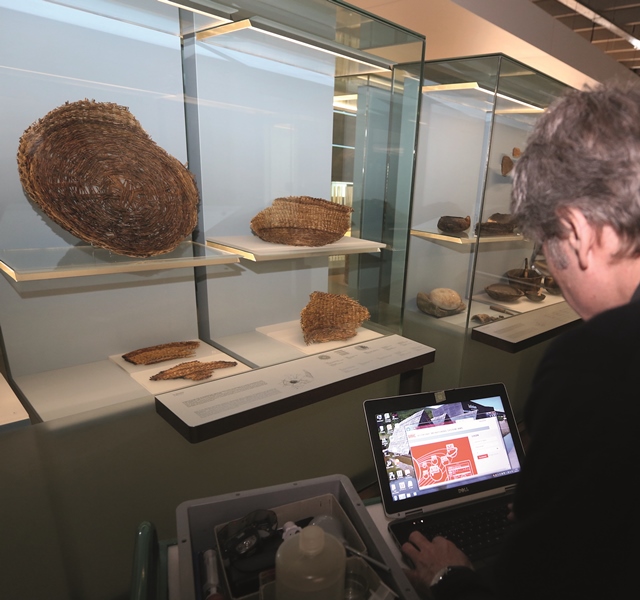The Laténium in Neuchâtel is the largest archaeological museum in Switzerland, with more than half a million artefacts. The most common problem for the museum in storing the ancient relics, is the variation in air humidity and temperature. There is no air conditioning system in the building, the museum uses temperature and humidity measurement probes to monitor the environment.
The museum has two laboratories, one where wooden artefacts are dated and which provides highly specialised services, and a laboratory for conservation and restoration work. Rotronic probes are used due to their high precision and advanced functions, they control the environments in glass display cabinets, exhibition rooms and storage areas. The museum houses 524,450 objects dating from the Neanderthal era through to the renaissance. Around 70 Rotronic temperature and humidity probes are installed.
Finding an archaeological object is of course of great importance. It is first removed from its surroundings and then kept under suitable conditions. During this time, it is expected that the object will start to destruct, the climate plays a huge part in this. If artefacts are not stored under the right conditions, their condition can deteriorate very quickly; air relative humidity of about 50 % is ideal.
Thanks to the Rotronic Monitoring system (RMS) the Laténium Museum has a complete overview of the probe installation locations with optimal environmental control. RMS provides a complete, flexible and yet easy to use continuous environmental monitoring solution instead of multiple fragmented and complex systems working in isolation. The RMS software stores all recorded measurements securely in a system that the user can access at any time, data can be retrieved in any form and integrated into third party systems, automated reports are easily generated and sent autonomously to key personnel.

The heart of the system is server-based web software with a secure SQL database. It records all data and events generating a range of alerts or warnings when the museum’s defined criteria are breached. The RMS data loggers transmit the measured values to the software via wireless or LAN communication.
Organic materials are sensitive to the climate, they will deteriorate following any variations. Artefacts are stabilised at a relative air humidity of 50 %. As the museum is not air conditioned, the curators decided to install climatic controls in every glass cabinet that housed archaeological objects to ensure they were kept at a constant humidity level.
Each cabinet has a cartridge fitted containing buffer material. Using the Rotronic RMS software, the museum can control the cabinets from a computer screen. It can provide detailed charts for a year, a week, a day or an hour to suit the application being monitored. These charts allow the curator to track seasonal or weekly fluctuations in humidity and temperature and will identify any anomalies.
The museum opted for the Rotronic system because it can achieve high precision in humidity measurement of ± 0.8 %rh while other manufacturers could only offer ±2 %rh.
The Laténium Laboratory for Conservation and Restoration is involved in various scientific projects in fundamental research as well as applied research (including the development of marketable products). This work is conducted in partnership with the scientific institutes of various colleges and universities in Switzerland as well as other organisations.







